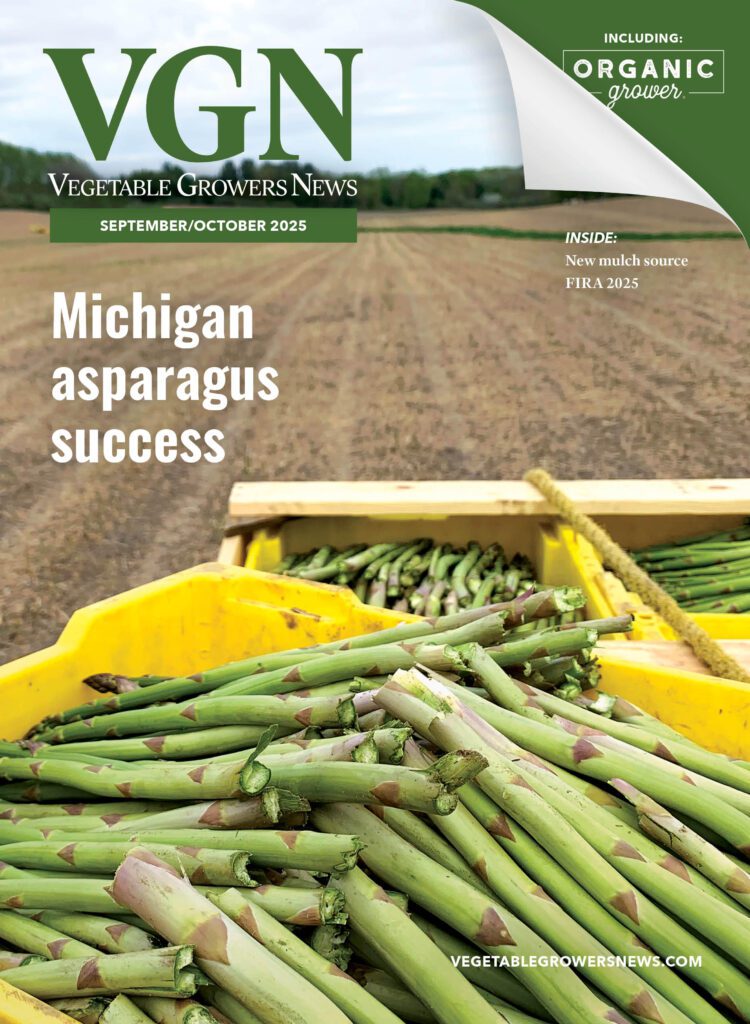
Aug 15, 2025Charting the path ahead: Navigating H-2A reform
Fruit and vegetable growers have increasingly turned to the H-2A agricultural guest worker program in response to the worsening shortage of a domestic workforce. As usage of the program has increased, its bureaucracy and uncertainty have become more severe, making long-standing efforts to reform the program even more urgent.
Right after I joined the Florida Fruit & Vegetable Association (FFVA) in 2021, the U.S. House of Representatives passed the Farm Workforce Modernization Act (FWMA) for the second time. FWMA was the product of months of negotiations between my predecessor, colleagues and farmworker advocate organizations. The product of compromise, FWMA was far from a perfect bill, and it seemed consensus among industry groups that improvements had to be achieved in the U.S. Senate.
For a brief moment at the end of 2022, momentum suggested a bill might make it across the finish line. However, the effort came up short in improvements and support to survive the filibuster.
Instead of H-2A reform from Congress, growers were barraged with a slew of new regulations from an aggressive administration, thus increasing costs and making the H-2A program more burdensome for growers to use. Between 2021 and 2025, six new rules from three different federal agencies became final. Over that same time, the Adverse Effect Wage Rate (AEWR) national average ballooned by more than 24%. The last of these rules became effective Jan. 17.

With a stalemate in Congress and a seemingly adversarial administration, industry groups turned to the courts for relief.
When the U.S. Department of Labor (DOL) published its final AEWR Methodology rule in 2023, disaggregating the AEWR into multiple wages, agricultural organizations across the country filed suit in venues including Lafayette, Louisiana, and Asheville, North Carolina. FFVA and others filed in Tampa, Florida. So far, only the court in Louisiana has granted any form of injunctive relief, narrowly tailored to the plaintiffs involved. In the other cases, preliminary relief has been denied.
Grower lawsuits
Last fall, the labor department published another final rule, “Improving Protections for Workers in Temporary Agricultural Employment.” The rule sought more to erode due process and private property rights than it did to improve protective standards for farmworkers. Again, groups across the country challenged the rule in federal courts across the Southeast. Multiple courts quickly agreed that the rule was illegal and granted various levels of preliminary relief. At the time of this writing, the rule is not being implemented by the DOL as litigation continues.
Cases challenging other rules, including the 2022 H-2A program rule, remain pending. As of April, no final relief has been entered, and most litigation has paused as new Labor and Justice Department leadership takes over.
Now well into 2025, the ground has shifted. We have a new administration in D.C., and with it new agency leadership and a new Congress. What does this mean for fruit and vegetable growers using the H-2A program? For FFVA, the mission hasn’t changed: stabilize wages and improve access to the program.
Wage stabilization
When communicating with FFVA’s members, the AEWR is always one of the first things that comes up. Florida is the largest user of the H-2A program, bringing in around 50,000 H-2A workers in each of the last few years. Because of Florida’s heavy use of the program, volatile shifts in the AEWR hit growers of all sizes hard.

In recent years, Florida has withstood some of the largest AEWR increases in the nation — nearly a 10% increase this year and almost a 15% increase just two years ago. What’s more, spikes in the artificial wage occur in the middle of Florida’s season, meaning it’s solely on the grower to absorb the unexpected cost.
In creating the H-2A program, Congress charged the program’s regulators with ensuring the employment of H-2A workers didn’t adversely affect the wages or working conditions of U.S. workers. Hence, the “adverse effect” wage rate. At the time, seasonal guest workers were supplemental to the U.S. fruit and vegetable workforce. Today, H-2A guest workers might be the sustaining force.
Improved access
Some in the fruit and vegetable industry possess limited to no access to the program. It’s well known that, due to the program’s “seasonal and temporary” requirements, year-round producers are currently ineligible. Even some seasonal employers can’t access the H-2A workforce they need.
Because of existing program definitions, grower-owned cooperatives cannot use the program. And, following a shift in regulatory interpretation in 2019, H-2A labor contractors can no longer employ workers to haul harvested product off the farm. As the shortage of U.S. workers willing to work in agriculture has grown, these gaps in eligibility have further stressed the industry.
As we continue forward in 2025, there are plenty of reasons for optimism. Solutions to these issues already exist, and every branch of government, at varying degrees, is able to provide the stability and access we’re seeking. But the industry must stay on mission. After all, it’s not optimism our fruit and vegetable growers need — it’s results.
Jamie Fussell is the director of labor relations for the Florida Fruit & Vegetable Association, based in Maitland, Florida. He is a member of the Florida Bar and leads the Florida Agricultural Labor Relations Forum held annually in Orlando.
















